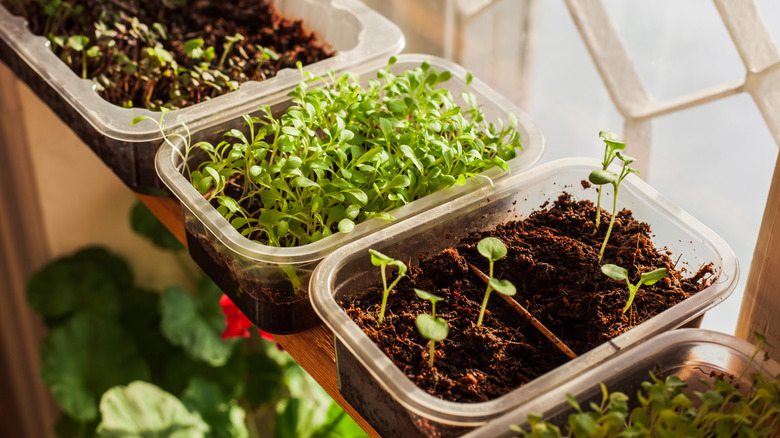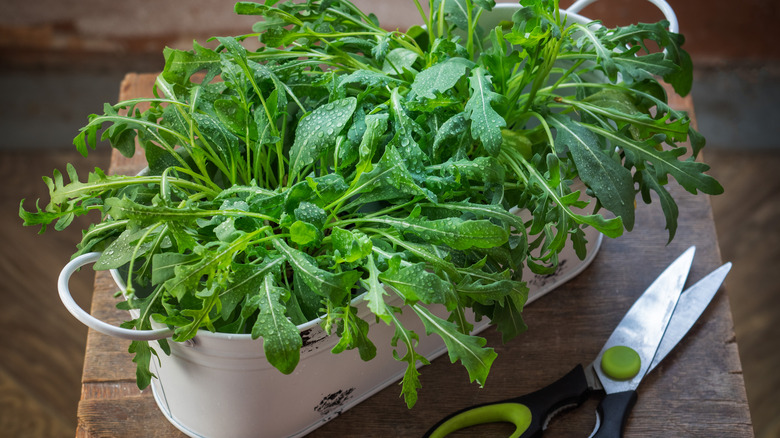How To Grow Arugula Indoors For Delicious Harvests Year-Round
Arugula (Eruca vesicaria) is a fast-growing leafy green with a slightly peppery taste. This delicious green is one of several garden vegetables that grow beautifully indoors throughout the winter and doesn't require a lot of space or specialized care. There are a few varieties that do better indoors such as rocket arugula and astro arugula. You can also grow wild arugula, which tastes a little spicier than other varieties and grows much slower, but is more resistant to hotter temps and bolting. Growing arugula indoors is pretty straightforward: choose a container with good drainage, add quality, lightweight potting soil, and make sure it gets plenty of light and water. If you plant seeds every two to three weeks instead of all at one time, you can ensure that you'll have arugula ready to harvest year-round.
Lighting is one of the most important factors in growing arugula successfully indoors. If your plants don't get the right amount of light, your harvests will be very poor. Provide arugula with four to six hours of direct light each day. You can usually get this by placing your plants in a south-facing window, but if it's wintertime or you don't feel the arugula is getting at least five hours of direct light daily, try grow lights for indoor plants and supplement natural sunlight with that. If you're using grow lights exclusively, place the lights about 6 to 12 inches above the plants and leave the lights on for 12 to 14 hours each day. You can get a timer for this so it goes on and off automatically.
Temperature, soil, and water needs for arugula
The ideal temperature for your arugula is between 50 to 65 degrees Fahrenheit during the day and about 10 degrees cooler at night. This plant doesn't like hot temperatures so anything over 75 degrees will cause it to bolt early, and you will end up with leaves that taste very bitter. Avoid placing your plants near heating vents or in windows that get really hot. Also avoid cold drafts in the winter. If you live in a cold climate or your home is on the colder side, use heating mats underneath your pots or insulated pots to keep the soil from getting too cold. Well-drained, lightweight potting soil is best to prevent waterlogged roots. To provide your arugula with important nutrients, add compost, manure, or worm castings to the soil.
This leafy green prefers a more alkaline soil with a pH of 6.0 to 7.5, which can be monitored by using one of these pH testers that help you achieve healthier soil and better harvests. Watering arugula can be a real balancing act. The best way to keep on track is to check the soil with your finger and when the top inch feels dry, it's time to water, which will typically be about two to three times per week. Use room temperature water and water at the base of the arugula, keeping the leaves dry to reduce any fungal issues from cropping up. For added nutrition, feed your arugula plants every few weeks (two or three is most common) with a diluted, organic liquid fertilizer such as seaweed extract, compost tea, or fish emulsion.

